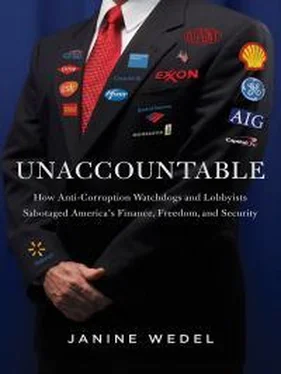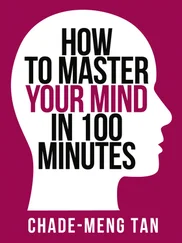73. Anthony Faiola, Ellen Nakashima, and Jill Drew, “What Went Wrong.” Washington Post, October 15, 2008 (http://www.washingtonpost.com/wp-dyn/content/story/2008/10/14/ST2008101403344.html).
74. Manuel Roig-Franzia, op. cit.
75. Ryan Lizza, “The Contrarian.” The New Yorker, July 6, 2009 (http://www.newyorker.com/reporting/2009/07/06/090706fa_fact_lizza?currentPage=all).
76. Ibid.
77. Bonnie Kavoussi, “Sheila Bair: Timothy Geithner Did ‘What Citigroup Needed’.” Huffington Post , September 27, 2012 (http://www.huffingtonpost.com/2012/09/27/sheila-bair-timothy-geithner_n_1918753.html).
78. Rolfe Winkler (interviewer), “The Big Interview: Sheila Bair.” Wall Street Journal Live, September 25, 2012 (http://live.wsj.com/video/the-big-interview-sheila-bair/A8FC152E-8F84-4A5E-BF25-70D499A62CB3.html#!A8FC152E-8F84-4A5E-BF25-70D499A62CB3).
79. Ron Suskind, Confidence Men: Wall Street, Washington, and the Education of a President. New York: HarperCollins, 2011, p. 379.
80. Timothy Geithner, Stress Test . New York: Crown, 2014.
81. Members of the Summers-Rubin circle appear to be enormously influential with the Obama administration, even while many are no longer in official roles.
82. Summers is routinely praised as “brilliant.” Until the summer of 2013, it was difficult to find a single article in the New York Times , the Washington Post , or other mainline American outlets that neglected to do so. The narrative of “brilliant” is obligatory, parroted by virtually everyone, even if, nowadays, it stands alongside demonstrated policy failure.
I first encountered Summers and his modus operandi indirectly, while studying Western aid to Russia after the Cold War (see Janine R. Wedel, Collision and Collusion: The Strange Case of Western Aid to Eastern Europe. New York: Palgrave, 2001, pp. 123-174). Early in his career at Treasury during the Clinton administration, Summers backed a U.S.-funded aid-and-advisory program to help reform the economy of the new post–Cold War Russia with his close friend and co-author from Harvard, economist Andrei Shleifer, leading the effort. In his official capacity, Summers helped Shleifer and Harvard win noncompetitive government awards through arrangements that flouted standard government procedure, according to other U.S. officials at the time.
Shleifer headed the Harvard team, which managed virtually the entire nearly $400 million U.S. flagship economic-aid portfolio. And, while itself a chief recipient of aid, the Harvard Institute—the umbrella through which the Harvard-Russia players received U.S. funding—also was charged with overseeing the portfolio they ran. That is, the Harvard players were to watch over themselves and their competitors. Shleifer himself played indistinct and overlapping roles as he lobbied in favor of his projects and advised both the United States and Russia while presenting himself as an independent expert. The Harvard “consultants” morphed into far more than dispensers of advice: they enmeshed themselves in the Russian power structure via their in-country cronies, gaining access to inside information. Backed by Summers and hundreds of millions of dollars in U.S. and Western aid and loans from international financial institutions, the Harvard-Russia partners made end runs around the democratically elected parliament, operated through top-down decree, and fused their own agendas with that of the state. Far from helping create a market economy with a legal and regulatory backbone, with which they had been tasked, they facilitated the expansion of an unaccountable state with a democratic façade. This all took place with the help of Summers and Rubin in the saddle at Treasury.
Meanwhile, Shleifer and another Harvard principal invested personally in many of the same areas in which they were being paid by U.S. taxpayers to provide “impartial” advice to help develop the Russian economy—including securities, equities, oil and aluminum companies, real estate, and mutual funds. They do not deny these investments (for the lawsuit and related documents, see http://janinewedel.info/harvardinvestigative.html#1). They also helped a wider circle meddle in the spoils of an unraveling resource-rich empire. The endowments of both Harvard and Yale gained access to valuable investments through networks inhabited by Shleifer or his wife, the currency trader and hedge fund manager Nancy Zimmerman. (She had worked at Goldman Sachs in the 1980s for Rubin, who was also a sometime board member of the Harvard Management Company that oversees Harvard University’s investments and remained close to him when he was secretary of the Treasury.) When these activities began coming to light, the Harvard players, with help from Summers, enfeebled multiple U.S. investigations of Harvard’s activities, including one by the Justice Department for fraud (eventually settled out of court) and for which Harvard paid $30 million to the U.S. government, the largest lawsuit in Harvard’s history. For the settlement paid by Harvard being a record one, see David McClintick, “How Harvard Lost Russia,” Institutional Investor magazine, January 24, 2006, p. 3.
Summers, after a two-year stint as Treasury Secretary from 1999 to 2001, returned to Harvard, this time as president. Two people who lobbied hard on his behalf to get him there: his old boss Rubin and his friend Shleifer, for whom he had covered and would continue to do so. See these articles by a Harvard dean at the time, Harry R. Lewis (Harry R. Lewis, “Larry Summers, Robert Rubin: Will The Harvard Shadow Elite Bankrupt the University and the Country?” Huffington Post, January 12, 2010; and Harry R. Lewis, “Larry’s Conflicts,” Huffington Post, July 31, 2013 [http://www.huffingtonpost.com/harry-r-lewis/larry-summers-conflict-of-interest_b_3679160.html]).
At Harvard, Summers was a walking conflict of interest. He soon brought in Rubin as a member of the Harvard Corporation, the university’s board of directors. While president, it turned out, Summers also moonlighted as a private investor. (See Frank Rich, “Awake and Sing!” New York Times , April 11, 2009; Frank Rich, “Obama’s Make-or-Break Summers.” New York Times , June 21, 2009; Louise Story, “A Rich Education for Summers (After Harvard).” New York Times , April 5, 2009; Matt Taibbi, “The Big Sellout.” Rolling Stone , December 1, 2009; and Matt Taibbi, “Inside the Great American Bubble Machine.” Rolling Stone , July 2, 2009.)
At the same time, Summers gambled with the university’s operating budget by betting on derivatives (one bank Harvard used: Goldman Sachs), investments that would prove disastrous. In addition, while advising a hedge fund and serving as a member of the board of the Harvard Management Corporation, which oversees the investment of Harvard’s endowment, Summers also “pressure[d] the university’s asset manager to buy more hedge funds for the University’s portfolio,” according to Harry Lewis. (Harry R. Lewis, “Larry’s Conflicts.” Huffington Post, July 31, 2013 [http://www.huffingtonpost.com/harry-r-lewis/larry-summers-conflict-of-interest_b_3679160.html].)
Summers also virtually succeeded in pushing the Harvard-Russia affair and the wrongdoing of his friend Shleifer under the rug, despite Shleifer’s being a principal subject of the U.S. government’s lawsuit against the university. (The settlement required Harvard to pay $26.5 million in fines for defrauding the U.S. government, Shleifer $2 million, and Hay [the other principal player named in the lawsuit] between $1 and $2 million (Marcella Bombardieri, “Harvard, teacher, and lawyer to pay US$30m.” Boston Globe , August 4, 2005).Only in 2006, after Harvard settled the government lawsuit, did Summers resign amid public-relations troubles within and outside the university.
Читать дальше












